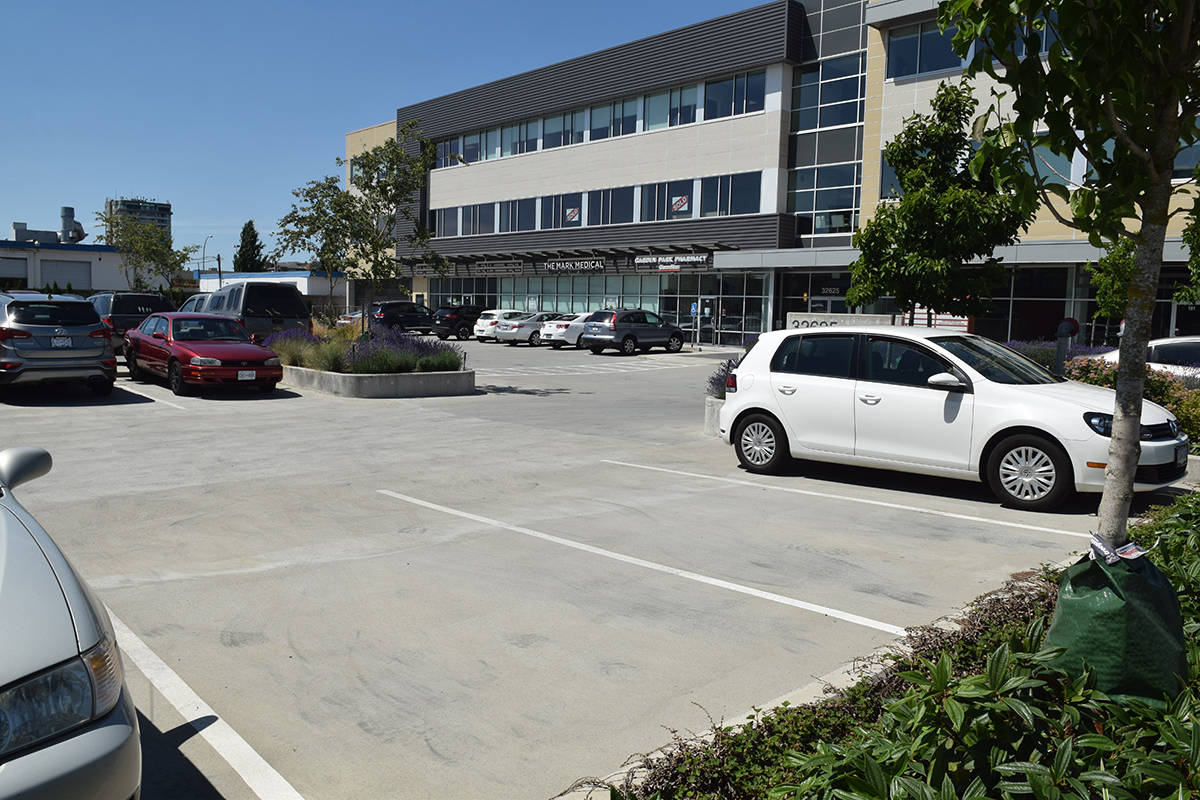It’s your average Wednesday morning along South Fraser Way, and the cars are everywhere: streaking down the road at 60 kilometres an hour, pulling into line at fast food drive-throughs, and mazing through parking lots.
But for every moving car there’s another that’s parked. And for every occupied parking space, there’s an empty spot likely to remain vacant until the Christmas shopping rush.
It’s that surplus of space that is at the forefront of planners minds as they craft a new plan for Abbotsford’s newly defined “city centre” along South Fraser Way.
Last year, council adopted a new Official Community Plan (OCP) that lays out how the city will add 60,000 new residents over the coming decades. Within the plan, South Fraser Way was defined as the city’s centre. (Multiple other “urban” and “neighbourhood” centres were also defined.)
But turning a vision for an urban pedestrian-friendly boulevard into a reality will require more than a plan; it will require a shift in thinking from developers, the business owners they rent to, and, most importantly, shoppers whose habits and preferences have been reinforced for decades.
• • • • •
If the present is epitomized by parking lots, then the future – at least as envisioned by the OCP – can be found at the intersection of Allwood Street and South Fraser Way. Over the last two years, Diverse Properties has built The Mark, a pair of three-storey commercial buildings. The broad side of one of the two buildings faces South Fraser, and sandwiched between it and the other building is a parking lot.
The buildings were approved before the adoption of the OCP, but Diverse Properties’ P.L. Meindertsma says the city’s desire for road-facing buildings was a major factor in the development’s design.
There are pros and cons to the policy, he said.
“The pro is it makes it look nicer. The con is the average person can’t see the availability of parking.”
He continued: “People here like to see where they can park and they want parking to be easy, because that’s what they’re used to.”
He said The Mark’s profile and exposure has reassured tenants and buyers that customers will quickly learn parking will be available, despite the lack of a road-facing lot.
But whether consumers will adjust their habits as more developments like The Mark are built is “a million-dollar question,” Meindertsma said.
• • • • •
City officials, though, think people can change.
Today, Abbotsford residents are used to getting in their cars and commuting from place to place. That mindset won’t shift overnight, particularly since the current layout of Abbotsford encourages such behaviour.
“There has always been this notion that more parking is better but we’re starting to realize now that more parking can be just as harmful as too little parking,” said Mark Neill, the city’s director of community planning.
Much of the space currently dedicated to parking sits vacant for the bulk of the year and is used only in December. The rest of the year, the parking mainly functions as a deterrant to walking, and as a sign to commuters that there is space available. (In any discussion about parking in Abbotsford, the historic downtown core – a commercial district where there is the perception of a scarcity of parking – is an outlier.)
Staff and Mayor Henry Braun have talked about how a more-responsive transit system, and more people living closer to their jobs, will result in fewer people using their cars, thereby reducing the demand for parking. Similarly, there is also a belief that businesses and developers will look to cater a new generation of shoppers and residents more inclined towards urban living. Under a city centre built around the new guidelines, Neill says there will still be parking available on Christmas – but shoppers might just have to walk farther.
The city might not get the final say on the matter. Zoning rules requiring set numbers of parking spaces, depending on the business, are being examined as part of an update that is underway to Abbotsford’s bylaw. But economics play just as big a factor as city rules: whether they’re shoppers or urban apartment-dwellers, people would still rather have available parking than not have it. And developers take notice.
A compromise that has become increasingly common – for residential buildings, at least – is underground parking. Below-grade parking is much more expensive to build, though.
Gerald Heinrichs, whose Mill District project includes two levels of parking for the two six-storey buildings, says it can cost between $35,000 and $50,000 per underground parking spot. Those costs end up being factored into the pricing of the new homes.
Still, people want to be able to park, and apartment-dwellers have become accustomed to storing their vehicle underground. While zoning rules would have allowed the Mill District to supply 1.5 spots for every unit being constructed, Heinrichs is building 1.9 spaces per unit to keep up with demand.
“The market demands the parking, not so much the city,” he said.
In Vancouver, some buildings don’t have any available parking; residents don’t need it, and the city doesn’t require it. But Abbotsford is still far from that point, according to both Heinrichs and Meindertsma.
Changing habits isn’t easy, and it’s unclear whether it will be consumers driving the change, or the city with its rules.
“What comes first, the chicken or the egg?” Meindertsma asked. “What comes first, the change in consumer behaviour or the change in the landscape?”

